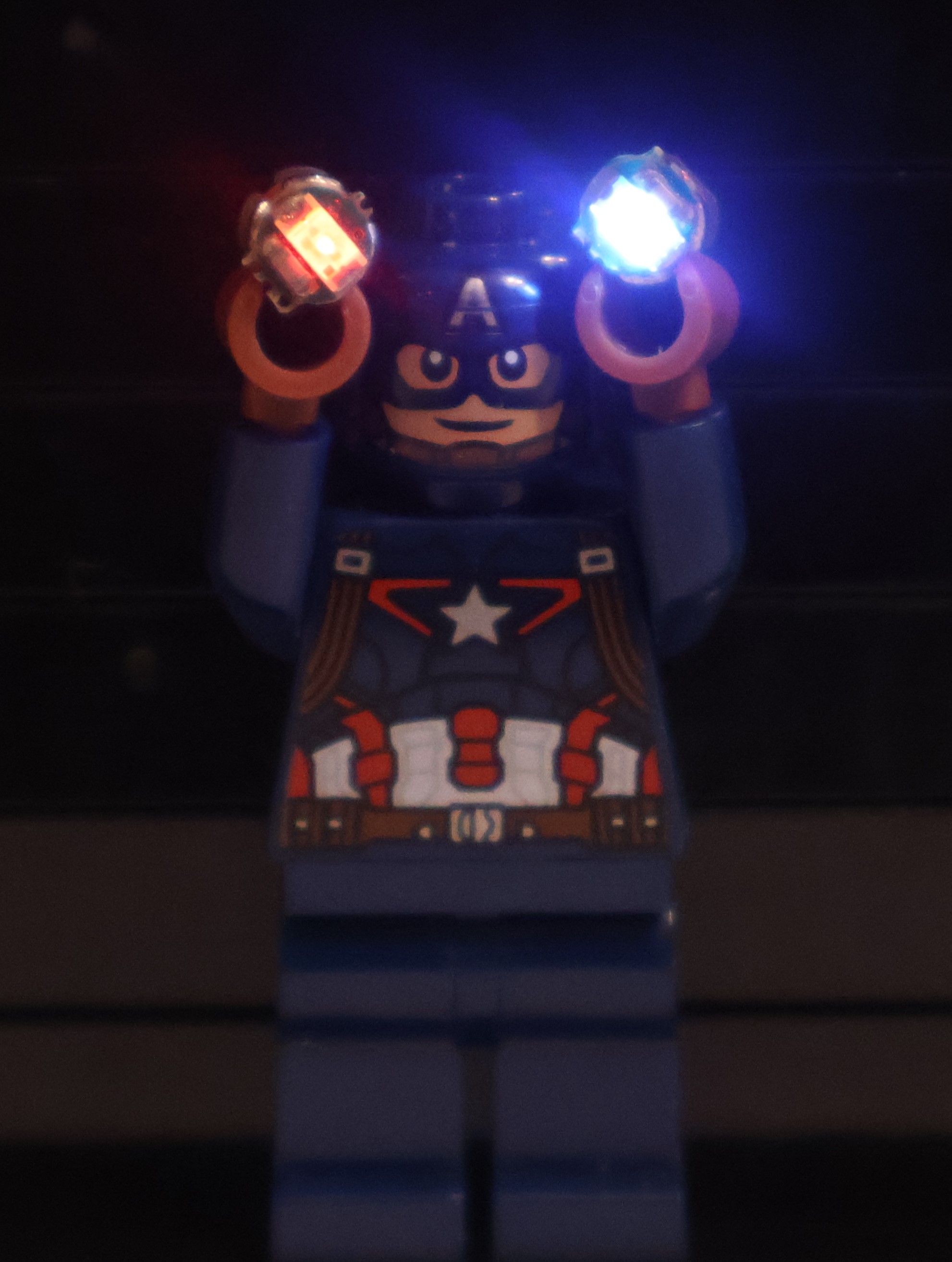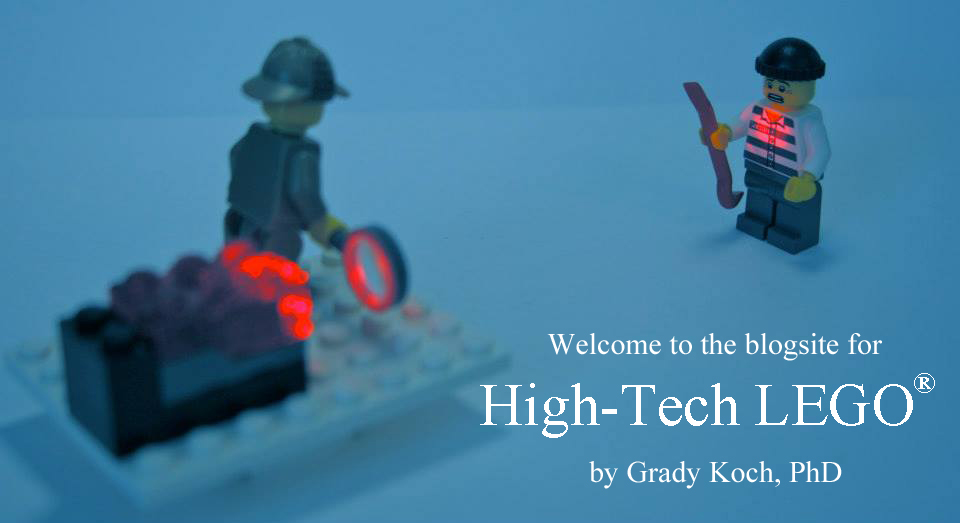Wireless LED Lighting
Customized lighting is a great combination with LEGO, adding sparkle to models or capability to inventions. But the recurring problem is how to connect power to the lighting. It’s inconvenient to route all that wiring. So here’s a solution: resonant inductive coupling! DFRobot recently released a low-cost implementation (5V Remote Wireless Power Supply LEDs 10 Pack - DFRobot).
Resonant inductive coupling has been around for a while, originally introduced by Nikola Tesla in the late 19th century. A magnetic field transfers energy from a source coil to another coil that powers a device. The innovation in the DFRobot design is in LEDs encapsulated with coils in a compact package, as in the figure below. These tiny lights are easy to incorporate in LEGO inventions. As an example, in the video below, here’s a LEGO platform that has the source coil hidden under the floor. LEDs placed on the floor will light up.

The lack of wiring allows the LEDs to move—lot’s of fun can be found with this. In the video below, I epoxied LEDs into the holes of a wheel (4185). A short axle inserted into this wheel creates a spinning top. Different colors on opposite sides of the top give an especially entertaining display.
